Why Iran plane disaster protests mark most serious test yet
- Published
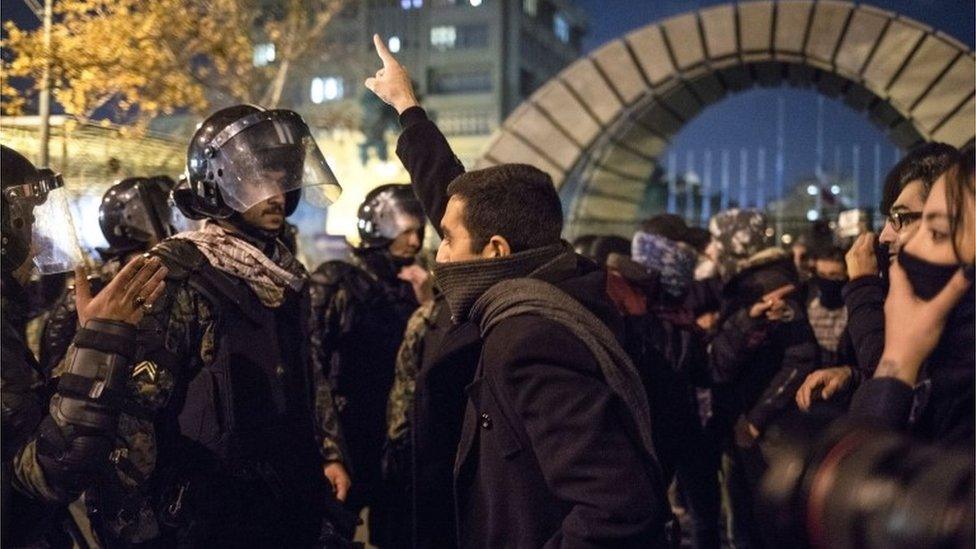
Many have been angered by the government's actions over the plane crash
The latest anti-government demonstrations sweeping Iran arguably pose the most serious challenge to the administration of any in its 40-year history.
In recent years, Iran has seen two major surges of opposition - in 2017 (late December) and 2019 (October and November). Both were fuelled by poor economic situations and sharp hikes in fuel prices that hurt the lower middle class and poorer families the most.
This time, demonstrations broke out after the powerful Islamic Revolutionary Guard Corps (IRGC) admitted it had shot down a Ukraine International Airlines Boeing 737-800 with 176 passengers and crew on-board after three days of strong denial.
Unlike the 2017 and 2019 protests, and those of 2009 which were triggered by disputed presidential elections, this week's demonstrations started off from universities and spread quickly across many cities around the country.
The initial story by the officials in Tehran was that the plane crashed as a result of engine failure. Iran's aviation authorities even claimed it was impossible that the plane could have been targeted by anti-aircraft missiles.
Footage shows missile strike on Ukrainian plane in Iran
The official version had too many flaws and emerging evidence also suggested otherwise. Videos that Iranian citizens had filmed and shared on social media showed a missile hitting the aeroplane right before it crashed. Later CCTV footage emerged from nearby security cameras that showed the plane was actually shot twice, which explained why the pilot lost contact with the airport minutes before the crash.
Although foreign leaders implied the plane had most probably been downed by missiles rather than engine failure, it was the IRGC's delayed confession that sparked the subsequent demonstrations.
On Friday - a day or two after the Islamic Republic held official burial ceremonies for some of the victims - Supreme Leader Ayatollah Ali Khamenei led the weekly prayers in Tehran.
The last time he did so was eight years ago, after most of the region was engulfed by the Arab Spring. On this occasion, he devoted most of his prayer speech to his top general, Qasem Soleimani, who was killed by a US drone strike, and to Iran's retaliatory missile attack on a US base in Iraq.
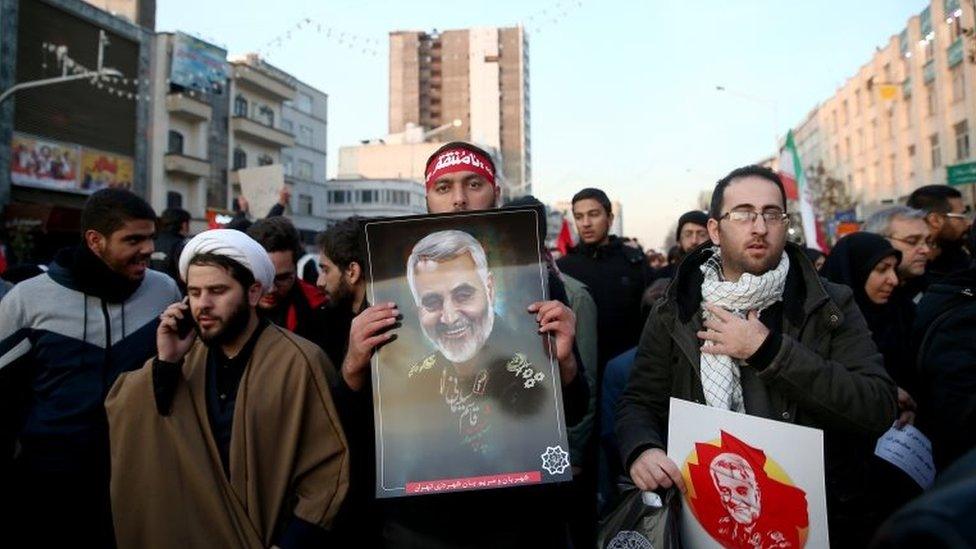
The killing of Iran's top commander brought many Iranians out in a show of solidarity
He mentioned the plane crash and paid condolences to the families of the victims but he did not apologise nor place responsibility on the IRGC, which reports directly to him.
Ayatollah Khamenei said there were ambiguities in how the plane had crashed and thanked the IRGC for the explanations it had provided in recent days after accepting responsibility.
Cracks on the inside
The crowds that took to the streets this week, unlike in previous demonstrations, were formed mostly of middle and upper-middle classes whose anger was mainly driven by what they saw as humiliating incompetence that killed so many innocent civilians - mostly Iranian dual nationals - followed by a series of bizarre lies and made-up excuses that officials had produced about the cause of the crash.
Protests outside Amir Kabir university, calling for resignations and accusing officials of lying
In years and months gone by, the Islamic Republic has been able to quash unrest by blaming the country's poor economic performance on US sanctions, and by using excessive force that left many killed or injured. The establishment has also been successful in unifying its ranks and filling the gaps between them against the demonstrators, but this time cracks have started to appear on the inside.
The leader's speech did not provide many answers to what has angered the people. The government has distanced itself from any responsibility for the plane crash.
President Hassan Rouhani has called for a full investigation and says those responsible will face retribution. There could actually be an opportunity for him here, with the IRGC, a powerful rival for his authority, in trouble.
But he and his government are not in the clear either. President Rouhani's government stood by the IRGC, until it finally accepted responsibility.
Iranian students refuse to walk over US and Israeli flags
His government repeated the false claim that engine failure was the reason for the crash. His government and himself as the head of Iran's National Security Council are also under heavy criticism for not closing down airports during the hours after Iran fired missiles in response to the killing of Soleimani.
For demonstrators on the streets, though, it does not really seem to matter which officials say what anymore - their demands have gone beyond the ranks of the establishment and they are directly asking for the leader himself to resign.
Now the question is whether this event can bring demonstrators who were angered by the economic situation and those who are incensed by the administration's lies about such a tragic event closer together.
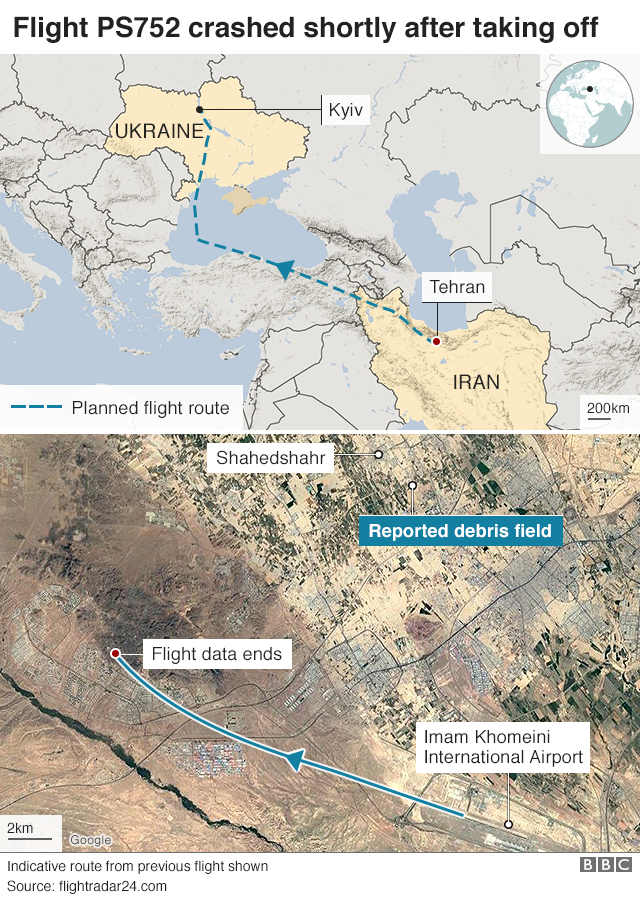

- Published12 January 2020

- Published14 January 2020
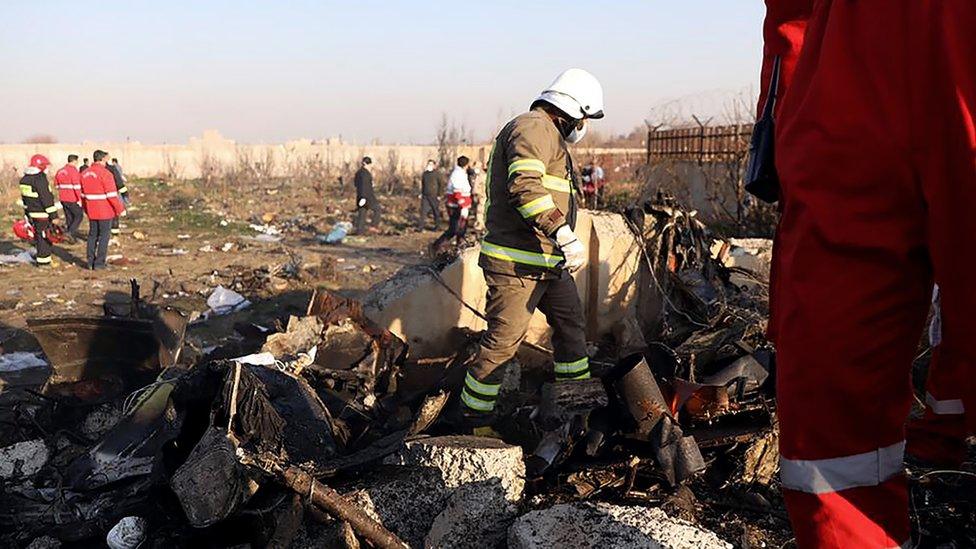
- Published11 January 2020
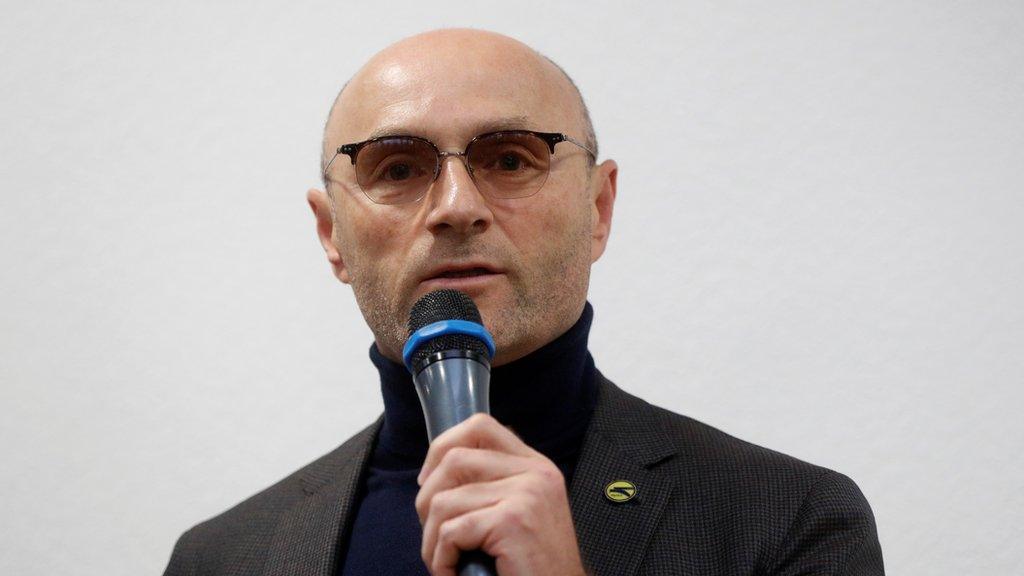
- Published9 January 2020
